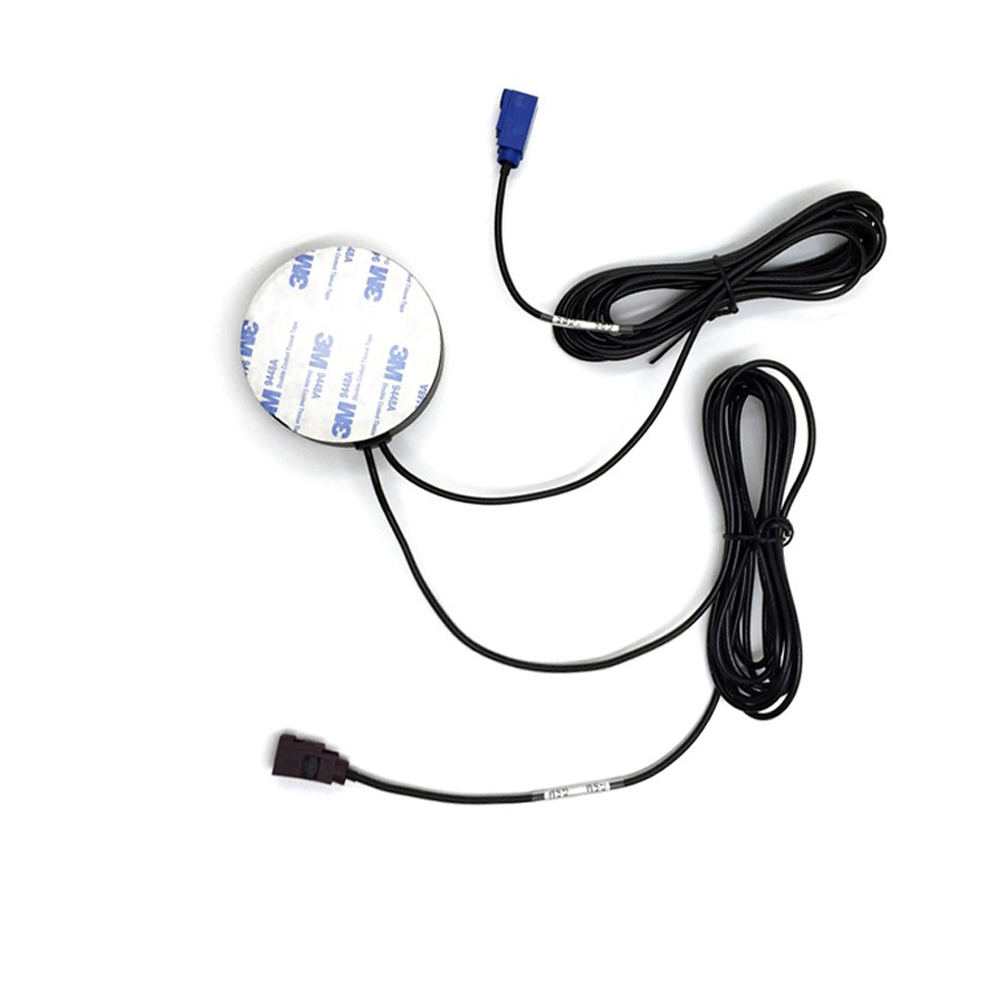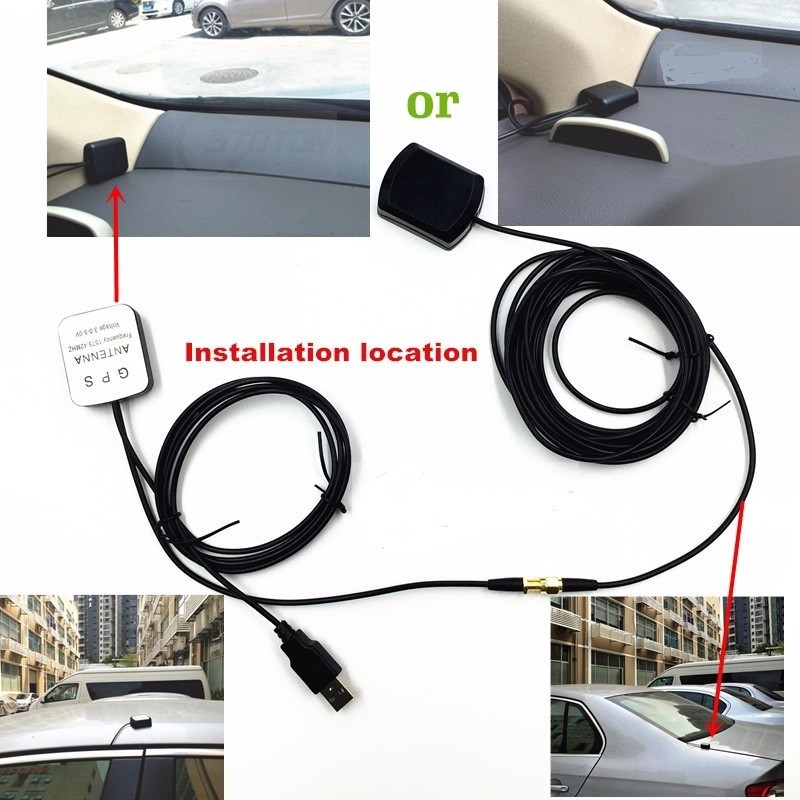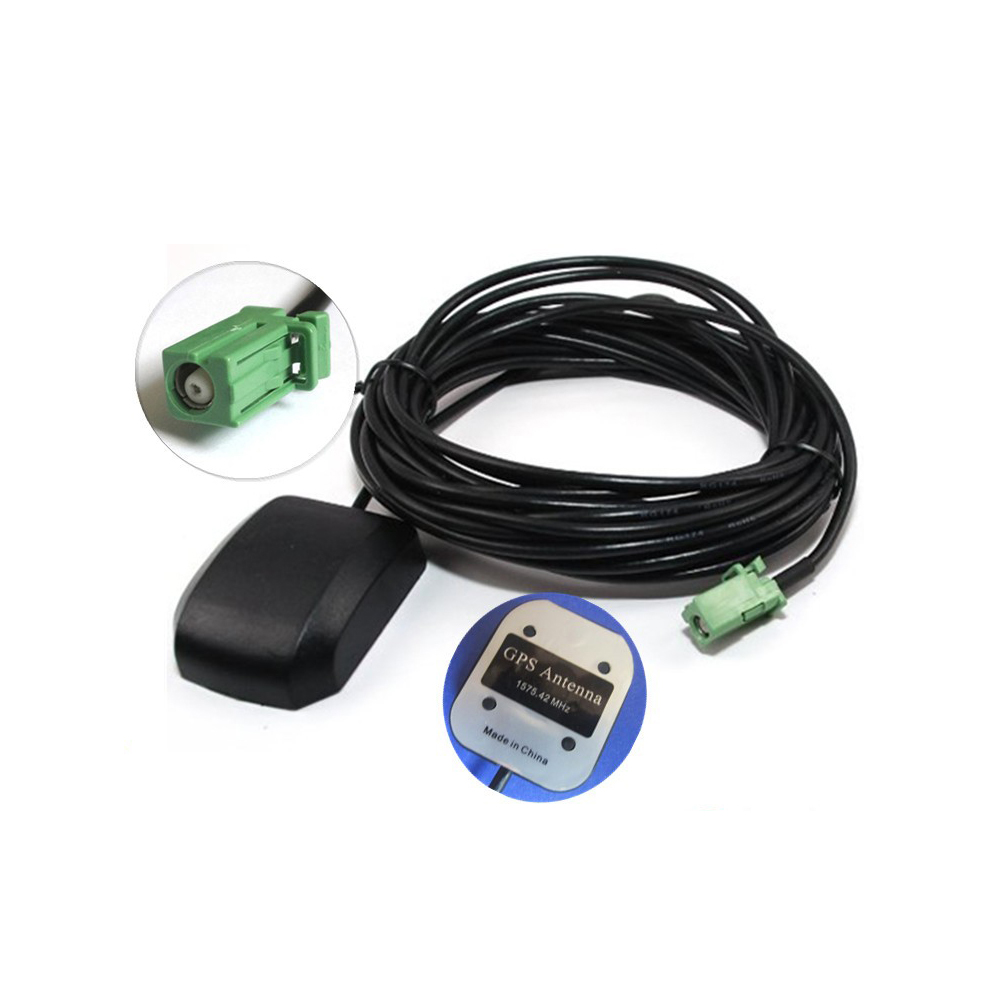
Privacy statement: Your privacy is very important to Us. Our company promises not to disclose your personal information to any external company with out your explicit permission.
What is GPS Antenna
GPS is a terminal for positioning or navigation by receiving satellite signals. GPS satellite signals are divided into L1 and L2, with frequencies of 1575.42MHZ and 1228MHZ respectively, among which L1 is an open civil signal and is a relatively weak signal. Therefore, an antenna is needed to assist in receiving signals. From the polarization mode, Inside GPS Antenna is divided into vertical polarization and circular polarization. In terms of placement, GPS Antenna SMA is divided into built-in antenna and external antenna. In terms of power supply, GPS Antenna Fakra is divided into active and passive.

How is GPS Antenna classified?
GPS Antenna for Car GPS Antenna SMA is divided into vertical polarization and circular polarization in terms of polarization.
The effect of circular polarization is better than that of vertical polarization, so generally GPS Antenna Fakra will use circular polarization
⒉ GPS antenna is divided into built-in antenna and external antenna in terms of placement.
The mounting position of the Inside GPS Antenna affects the antenna signal reception. The reason for the shape of the early mobile phone is that the antenna is often used, and the EMI does not affect it, and the star collection effect is very good. However, with the intelligentization of mobile phones, the pursuit of compactness and beauty, GPS antennas are mostly built-in. At this time, the antenna must be above all metal devices, and the shell must be plated and grounded well, away from EMI interference sources.
3. From the aspect of power supply, GPS antenna is divided into active and passive.
The external GPS is an active antenna, and the passive antenna does not contain an LNA amplifier, just the antenna body.

What are the main reasons that affect the performance of GPS antennas?
1. Ceramic sheet: The quality of the ceramic powder and the sintering process directly affect the performance of the Inside GPS Antenna. The larger the area of the ceramic sheet, the greater the dielectric constant, the higher the resonance frequency, and the better the acceptance effect.
2. Silver layer: The silver layer on the surface of the ceramic antenna can affect the resonant frequency of the antenna. The frequency point of the ceramic chip with good effect is 1575.42MHz, but the frequency point is easily affected by the environment. The shape of the silver surface coating must be adjusted to keep the frequency point at 1575.42MHz.
3. Feed point: The ceramic antenna collects the resonance signal through the feed point and sends it to the back end. Due to impedance matching, the feed point is generally not in the center of the GPS Antenna SMA, but slightly adjusted in the XY direction. Such an impedance matching method is simple and does not add cost.
4. Amplifying circuit: the shape and area of the PCB carrying the ceramic antenna. Due to the characteristics of GPS rebound, when the area of the ceramic sheet is 7cm×7cm without interruption, the performance of patchGPS Antenna Fakra can be maximized. So keep the area and shape uniform. The selection of the gain of the amplifier circuit must match the gain of the back-end LNA. Sirf's GSC3F requires that the total gain before signal input should not exceed 29dB, otherwise the signal will be oversaturated and self-excited.

4 important parameters to know when choosing a GPS antenna?
GPS Antenna SMA has four important parameters: Gain, Standing Wave (VSWR), Noise figure, and Axial ratio. Among them, the axial ratio is particularly emphasized, which is an important indicator to measure the difference of the signal gain of the whole machine in different directions. Since the satellites are randomly distributed in the hemispherical sky, it is very important to ensure that the antennas have similar sensitivity in all directions. Axle ratio is affected by GPS Antenna Fakra performance, appearance structure, internal circuit and EMI of the whole machine.

GPS antenna consists of four important parts?
Most of the Inside GPS Antennas are right-handed polarized ceramic dielectrics, and their components are: ceramic antennas, low-noise signal modules, cables, and connectors.
Among them, ceramic antenna is also called passive antenna, dielectric antenna, PATCH, which is the core technology of GPS antenna. The signal acceptability of a GPS antenna is largely determined by the composition of its ceramic part.
The low noise signal module, also known as the LNA, is the part that amplifies and filters the signal. The selection of its components is also very important, otherwise it will increase the reflection loss of the GPS signal and cause excessive noise.
The selection of cables should also be based on reducing reflections to ensure impedance matching.


Privacy statement: Your privacy is very important to Us. Our company promises not to disclose your personal information to any external company with out your explicit permission.

Fill in more information so that we can get in touch with you faster
Privacy statement: Your privacy is very important to Us. Our company promises not to disclose your personal information to any external company with out your explicit permission.